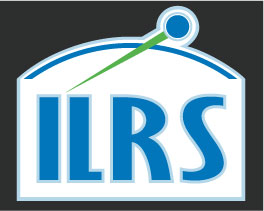
Jason-2: Mission Support
Jump to: Mission Support Status, Current Tracking Statistics, Mission Support Request
ILRS Mission Support Status:
Precision orbit determination is a fundamental requirement for achieving the goal of Jason-2. Jason-2 also has GPS receivers. The SLR data provides a crucial centering of the orbit relative to the Earth's center of mass. SLR also provides the only absolute calibration of the radial orbit error through the analysis of high elevation SLR passes.
Jason-2 Mission Support Request Form (08-Jun-2007, PDF)
Name: Jason-2
Host: CNES / EUMETSAT / NASA / NOAA
Primary Technical Contact: Gilles Tavernier
Address: CNES, BPi 2002, 18 avenue Edouard Belin
31401 Toulouse Cedex 9, FRANCE
Phone No.: 33 -(0)5 61 27 37 76
FAX No.: 33 -(0)5 61 28 25 95
E-mail Address: gilles.tavernier 'at' cnes.fr
Alternate Technical Contact: Jean-Paul Berthias
Address: CNES, BPi 1421, 18 avenue Edouard Belin
31401 Toulouse Cedex 9, FRANCE
Phone No.: 33 -(0)5 61 28 32 36
FAX No.: 33 -(0)5 61 28 17 48
E-mail Address: jean-paul.berthias 'at' cnes.fr
Primary Science Contact: John Ries
Address: Center for Space Research, R1000
The University of Texas at Austin, Austin TX 78712 USA
Phone No.: 1 -512 471 7486
Fax No.: 1 -512 471 3570
E-mail Address: ries 'at' csr.utexas.edu
Alternate Science Contacts:
Frank Lemoine
Address: NASA/GSFC Code 698
Greenbelt, MD 20771 USA
Phone No.: 1 -301 614 6109
Fax No.: 1 -301 614 6522
E-mail Address: Frank.Lemoine 'at' gsfc.nasa.gov
John Lillibridge
Address: NOAA/NESDIS/ORA: E/RA31, 1335 East-West Hwy #5344
Silver Spring, MD 20910 USA
Phone No: 1-301-713-2857 x121
Fax No: 1-301-713-3136
E-mail Address: John.Lillibridge 'at' noaa.gov
Mission Specifics:
Scientific or Engineering Objectives of Mission: The Ocean Surface Topography Mission (OSTM) is a joint oceanography mission to monitor global ocean circulation, climate change and sea-level rise. The Jason-2 satellite is the follow-on to the TOPEX/POSEIDON and Jason-1 satellites. The satellite will also support the Time Transfer by Laser Link (T2L2) experiment, designed to allow the synchronization of remote ultra-stable clocks and the determination of their performances over intercontinental distances. Two other instruments, LPT (Light Particle Telescope) and Carmen-2, will study the radiation environment at the Jason-2 altitude.
Satellite Laser Ranging (SLR) Role of Mission: Precision orbit determination is a fundamental requirement for achieving the goals of the OSTM. The SLR data play an important role in two ways (1) providing strong tracking information to complement GPS and DORIS, and (2) providing a unique and unambiguous verification of the absolute radial orbit accuracy. The T2L2 experiment also depends entirely on the SLR tracking.
Anticipated Launch Date: June 15, 2008
Expected Mission Duration: 3-5 years
Web sites for Jason-2:
http://sealevel.jpl.nasa.gov/mission/ostm.html (NASA)
http://www.aviso.oceanobs.com/html/missions/jason2/welcome_uk.html (AVISO)
http://smsc.cnes.fr/JASON2/Fr/ (CNES)
http://www.osd.noaa.gov/ostm/index.htm (NOAA)
Jason-2 T2L2 Experiment Technical Contact: Etienne Samain
Address:
OCA UMR Gemini, Avenue Nicolas Copernic
06130 Grasse FRANCE
Phone no.: 33 - (0)4 93 40 54 29
E-mail: etienne.samain 'at' obs-azur.fr
Website: http://www.obs-azur.fr/gemini/projets/t2l2/
Anticipated Orbital Parameters:
Altitude: 1336 km
Inclination: 66 degrees
Eccentricity: ~0.001
Tracking Requirements:
Tracking Schedule: 24 hours, 7 days a week
Spatial Coverage: global
Temporal Coverage: as dense a possible
Data Accuracy: cm or better
Operations Requirements:
Mission Coordinator (ILRS, Subnetwork, etc.):
Priority of SLR for POD: high priority (essential for best POD; critical for orbit accuracy verification)
Other Sources of POD (GPS, PRARE, Doppler, etc.): GPS and DORIS
Primary Analysis Center: CNES
Normal Point Time Span (sec): 15-20 seconds
Data Delivery Time Requirements: 24 hours where possible; a few days otherwise
Subnetworks/Stations Requested to Track: During the initial phase of the Jason-2 mission, Jason-1 and Jason-2 will fly in tandem mode for several months (on the same ground track separated by approximately one minute). Interleaving tracking between both satellites is the preferred mode as long as the data loss due to switching is small; this applies primarily for higher maximum elevation (i.e. longer) passes. For stations where interleaving would lead to sparse tracking or for lower elevation (i.e. shorter) passes, tracking alternate passes is preferred.
Retroreflector Array Information:
Description of Array and Location: 16 cm hemispherical array consisting of 9 corner cubes on nadir side of satellite (see figure below)
Technical Contact for Array Correction/Center of Mass: Parag Vaze
Phone No.: 1 - 818 393 1217
E-mail: parag.vaze 'at' jpl.nasa.gov
Other Comments: Reflector array and physical location identical
to Jason-1; location of center of mass to be specified after launch.
The LRA has an unobstructed
field of view of 120°.
Spacecraft Configuration:

Figure: Exploded view of OSTM/Jason-2 spacecraft (from http://www.jason.oceanobs.com/html/missions/jason2/instruments)




